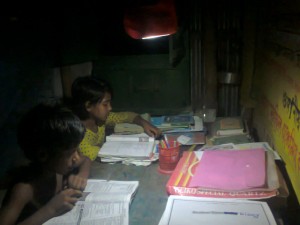Principal Investigator
• Dr. Abu S. Shonchoy
• Dr. Yuya Kudo
• Dr. Kazushi Takahashi
Project Area
Subdistrict: Rajibpur
District: Kurigram
Project Description
With the Fund assistance from IDE-JETRO, Japan, and KOPERNIK, Indonesia “The Demand for and the Impact of Solar Lanterns in Northern Part of Bangladesh” started its journey in April 2013 by conducting rigorous school visits in the form of Participatory Rural Appraisal (PRA). Visit to 28 schools and meeting with School Management Committees (SMCs) and teachers have produced a pool of around 2500 population’s short data set to choose potential samples among. Among the 2500 population, we have chosen 1292 samples to conduct a baseline survey (panel 1). Finally, after sorting out through rigorous scrutiny we have conducted a baseline survey for 911 households.
Shortly after conducting the baseline survey we engaged in package distribution among the sample at each school we find 882 students concurring with our research objectives. We have 436 students under the control group, 248 under treatment arm 1 (Three solar lanterns), and 198 under treatment arm 2 (one solar lantern).
By collecting a total of six rounds of health information using Spiro-meter and other conventional instruments the project aims at the point-to-point impact of the package within different groups. In addition, six round-time diary collection provides usage record and impact in time management record of the targeted pupils.
This study conducted an experimental intervention in unelectrified areas of northern Bangladesh to investigate the effectiveness of solar products in improving children’s educational achievement.
